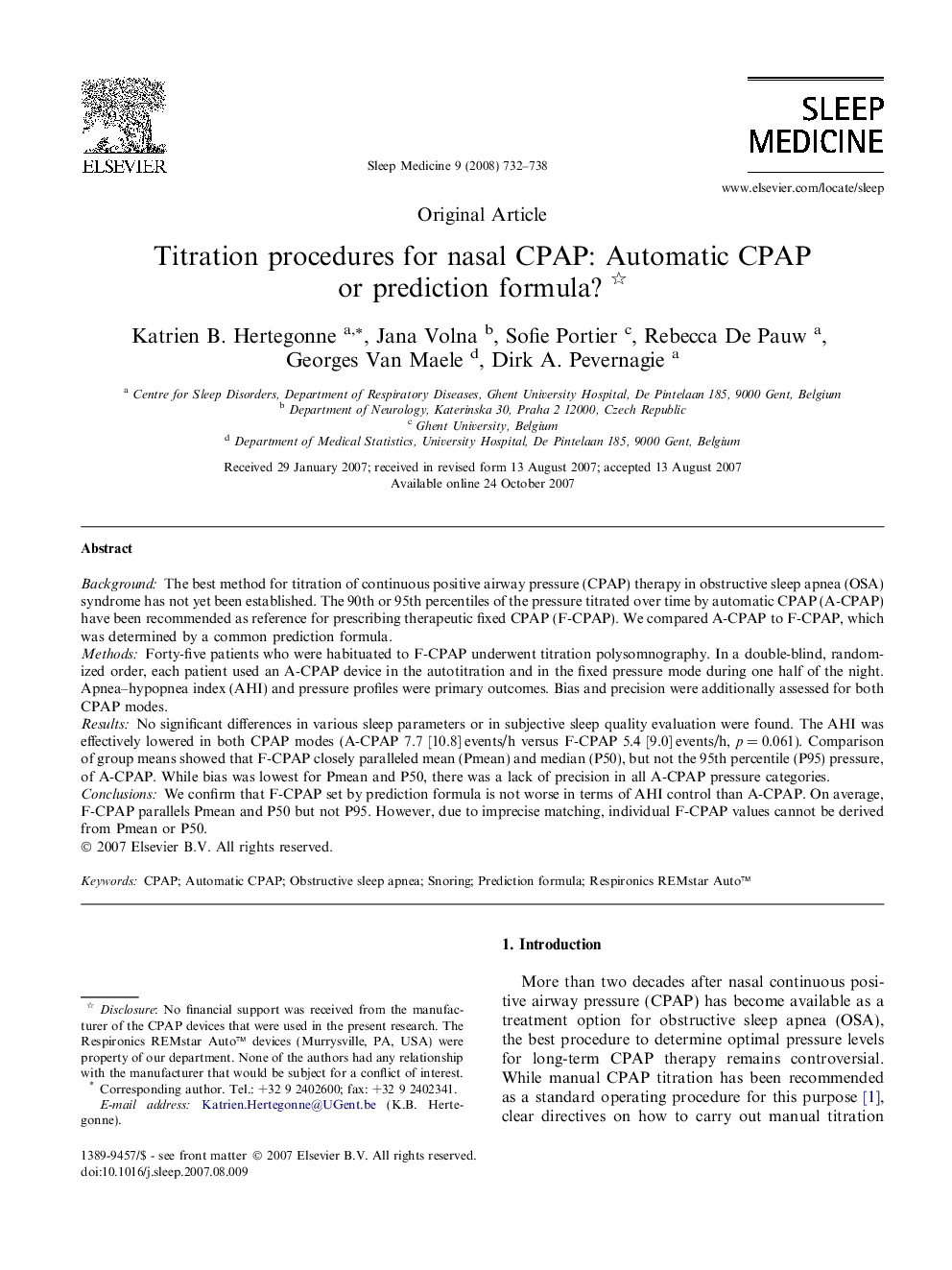| Article ID | Journal | Published Year | Pages | File Type |
|---|---|---|---|---|
| 3177311 | Sleep Medicine | 2008 | 7 Pages |
BackgroundThe best method for titration of continuous positive airway pressure (CPAP) therapy in obstructive sleep apnea (OSA) syndrome has not yet been established. The 90th or 95th percentiles of the pressure titrated over time by automatic CPAP (A-CPAP) have been recommended as reference for prescribing therapeutic fixed CPAP (F-CPAP). We compared A-CPAP to F-CPAP, which was determined by a common prediction formula.MethodsForty-five patients who were habituated to F-CPAP underwent titration polysomnography. In a double-blind, randomized order, each patient used an A-CPAP device in the autotitration and in the fixed pressure mode during one half of the night. Apnea–hypopnea index (AHI) and pressure profiles were primary outcomes. Bias and precision were additionally assessed for both CPAP modes.ResultsNo significant differences in various sleep parameters or in subjective sleep quality evaluation were found. The AHI was effectively lowered in both CPAP modes (A-CPAP 7.7 [10.8] events/h versus F-CPAP 5.4 [9.0] events/h, p = 0.061). Comparison of group means showed that F-CPAP closely paralleled mean (Pmean) and median (P50), but not the 95th percentile (P95) pressure, of A-CPAP. While bias was lowest for Pmean and P50, there was a lack of precision in all A-CPAP pressure categories.ConclusionsWe confirm that F-CPAP set by prediction formula is not worse in terms of AHI control than A-CPAP. On average, F-CPAP parallels Pmean and P50 but not P95. However, due to imprecise matching, individual F-CPAP values cannot be derived from Pmean or P50.
